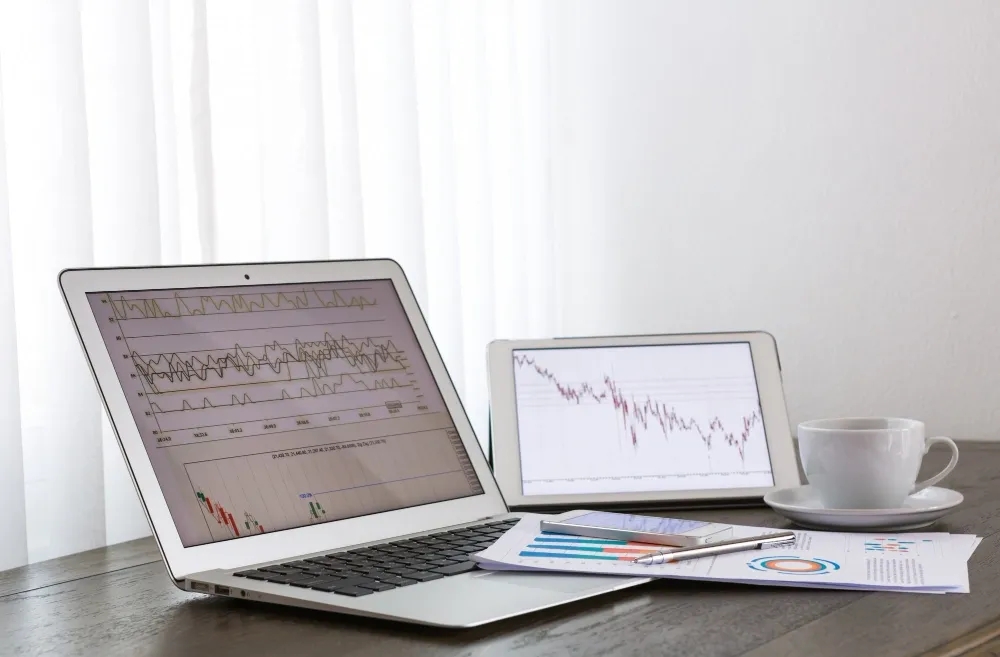What Is Long-Term Investing? Strategies and Why It Outperforms Active Trading

Long-term investing is the foundation of wealth building. It’s the strategy used by the world’s most successful investors — from Warren Buffett to everyday individuals who quietly grow their portfolios over time.
Unlike short-term traders who chase daily price swings, long-term investors focus on staying invested for years, allowing the power of compounding and business growth to do the heavy lifting.
This article explains what long-term investing is, how it works, and why patience often beats speed in the financial markets.
What Is Long-Term Investing?
Long-term investing is a strategy where investors buy and hold assets — such as stocks, ETFs, or bonds — for an extended period, typically several years or even decades.
The goal is not to profit from short-term volatility, but to capture the gradual appreciation of high-quality companies and the compounding effect of reinvested earnings or dividends.
According to Morningstar, long-term investing remains one of the most consistent ways to build wealth because it aligns with the natural growth cycle of businesses and economies.
In simple terms, it’s about time in the market, not timing the market.
How Long-Term Investing Works
Long-term investing is driven by fundamental analysis and long-range outlooks, rather than quick trades or technical signals.
The process typically involves:
- Researching strong companies or ETFs with sustainable growth potential.
- Building a diversified portfolio across sectors and geographies.
- Reinvesting dividends to enhance compounding.
- Holding through market cycles, ignoring short-term volatility.
- Reviewing and rebalancing periodically (once or twice a year).
Over time, the compounding effect — when earnings generate more earnings — becomes the most powerful driver of portfolio growth.
For example, a $10,000 investment earning 8% annually can grow to nearly $100,000 in 30 years without adding a single dollar more.
Long-Term Investing vs Short-Term Trading
The difference between long-term investing and trading lies in mindset and time horizon:
| Aspect | Long-Term Investing | Short-Term Trading |
|---|---|---|
| Holding Period | Years to decades | Seconds to weeks |
| Goal | Steady wealth accumulation | Quick profits |
| Analysis Type | Fundamental | Technical |
| Market Focus | Business value | Price action |
| Risk Exposure | Lower volatility over time | High short-term volatility |
| Tax Implications | Favorable long-term gains | Higher due to frequent trades |
| Best For | Patient investors | Active, full-time traders |
Long-term investing doesn’t aim for perfection — it rewards consistency, not constant activity.
Common Long-Term Investing Strategies
1. Buy and Hold
The simplest and most effective strategy. Investors purchase quality assets and hold them through all market conditions, trusting in long-term growth.
2. Dividend Growth Investing
Focuses on companies that consistently pay and increase dividends, providing steady cash flow and compounding potential.
3. Index Fund or ETF Investing
Instead of picking individual stocks, investors buy ETFs tracking major indices like the S&P 500 (SPY) or Nasdaq-100 (QQQ) — offering instant diversification.
4. Dollar-Cost Averaging (DCA)
Investing a fixed amount at regular intervals regardless of market conditions, reducing the impact of short-term volatility.
5. Thematic or Sector Investing
Investing in long-term global trends such as renewable energy, AI, or digital transformation.
Benefits of Long-Term Investing
- Compounding Returns
Reinvested profits grow exponentially over time, creating a snowball effect on wealth. - Lower Emotional Stress
You don’t need to monitor markets every minute — patience replaces panic. - Reduced Transaction Costs
Fewer trades mean lower fees and taxes. - Better Alignment with Growth
Owning assets for years lets you benefit from innovation, earnings expansion, and economic progress. - Outperformance Over Time
Historical data from the S&P 500 shows that holding for 10+ years almost always results in positive returns, despite short-term volatility.
Risks and Challenges
- Market Downturns: Extended bear markets can test investor patience.
- Inflation Risk: Cash held too long loses value; investing helps offset this.
- Overconfidence: Assuming “buy and hold” means ignoring portfolio review.
- Company-Specific Risk: Even great businesses can decline — diversification is key.
Successful long-term investors accept short-term pain for long-term gain.
Tips for Long-Term Investors
- Invest Early: Time is your greatest asset — start as soon as possible.
- Stay Diversified: Spread investments across sectors, regions, and asset classes.
- Ignore Market Noise: Focus on business fundamentals, not headlines.
- Reinvest Dividends: Compounding accelerates growth.
- Review Annually: Rebalance if allocation drifts too far from goals.
- Think Decades, Not Days: Patience often outperforms timing.
Real Example of Long-Term Success
Consider an investor who bought Apple (AAPL) shares in 2010 for around $3 (split-adjusted). By 2025, that same share is worth over $180 — not counting dividends.
No day trading strategy could have replicated that consistency with the same level of risk control.
Conclusion
Long-term investing is not about predicting short-term market moves — it’s about owning the future.
By staying disciplined, diversified, and patient, investors can benefit from decades of global innovation and economic growth.
Platforms like Gotrade make it easier than ever to start long-term investing in top U.S. stocks and ETFs from just $1, allowing anyone to build a portfolio that compounds over time.
FAQ
1. What is long-term investing?
It’s a strategy focused on buying and holding assets for years to capture steady growth and compounding returns.
2. Is long-term investing safer than trading?
Generally yes, because it avoids short-term volatility and benefits from overall market growth.
3. How long should I hold my investments?
At least five years — ideally longer — to fully realize compounding effects.
4. What’s the best way to start long-term investing?
Start small, invest consistently (DCA), and use diversified ETFs or quality stocks.
Disclaimer
Gotrade is the trading name of Gotrade Securities Inc., which is registered with and supervised by the Labuan Financial Services Authority (LFSA). This content is for educational purposes only and does not constitute financial advice. Always do your own research (DYOR) before investing.




